Part of life for every guitarist is restringing their guitar. It is a crucial thing that will keep your guitar sounding good and healthy. Replacing the old strings with new ones can give a new life to your guitar. So how much does it cost to restring your guitar?
On average, the cost of replacing the strings by yourself is around $5. Having a professional change them for you will cost you around $20 on average without the cost of the strings. You would have to keep in mind that the price varies and depends on many different things such as strings types, type of guitar, and where you live. The price of changing strings ranges between $5 and $75.
Restringing a guitar is considered an easy task to do so it is worth taking your time to change them by yourself. Let’s take a look at what else is there to know when it comes to changing your guitar strings and the expenses of doing it.
Will A Music Store Restring My Guitar?

If you are not too sure how to change your guitar strings, most people would go to the nearest music shop. Almost all of the music shops offer guitar restringing services. This can be a great learning opportunity for beginner guitarists since most of the music shops will let you be part of the procedure.
How Much Do They Charge?
Price may vary on the type of strings you want and the service fee for changing your strings by professionals. The usual range of price is 20$-50$. Buying 5$ strings will cost you on average 25$ as an average price of 20$ for the service.
If there is something unique about your guitar, like additional strings or a certain type of strings, there might be an additional fee. In most cases, guitar shops will charge more for guitars that have Floyd rose and 12 strings. The main reason for that is the fact that it takes more time to do it and it requires a more delicate approach.
What Music Stores Offer Guitar Restringing?
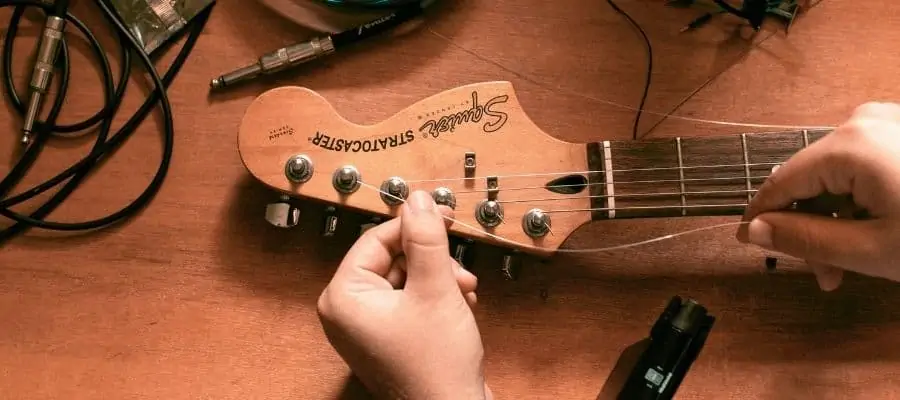
When it comes to guitar restringing, one of the most famous guitar shops is Guitar Center. Guitar Center offers almost everything when it comes to guitar maintenance. From restringing your guitar to upgrades and customization.
Guitar Center charges around 20$ for the labor of changing the strings plus the cost of the strings you want. There is also Dave’s Guitar Shop that offers the service of changing the strings. Their cost of restringing service is similar to Guitar Centers.
When it comes to Canada, the most famous guitar shops are Cosmo and The Guitar Shop. Pricing is similar to the U.S with Canada being a little bit pricier. The cost of a guitar restringing service is about 25-50$ depending on the price of the strings you want to have.
Australia is a little pricier since they start at 45-50$ and can go as high as 75$. Most of the guitar shops in Australia will charge you 75$ if you have Floyd rose on your guitar or if it is a twelve-string guitar. But that is not the only difference. They will also include cleaning of the fretboard, fret buff, and neck oil.
In the United Kingdom, the restringing service goes for much less. The average price comes around £10 (~$13.5) for standard guitar without the cost of strings. For twelve-string guitar, the average guitar shop will charge you around £15 (~$20) for the service only. Having Floyd rose on your guitar can cost you up to £20 (~$26) for the restringing service plus the price of the strings.
The price of a restringing service in Europe goes for about 15$-20$ without strings included. For twelve-string guitar, they will charge you around 25$-30$. Restringing guitars with Floyd rose will go for the same price as twelve-string guitars.
How Do I Know If My Guitar Strings Are Dead?
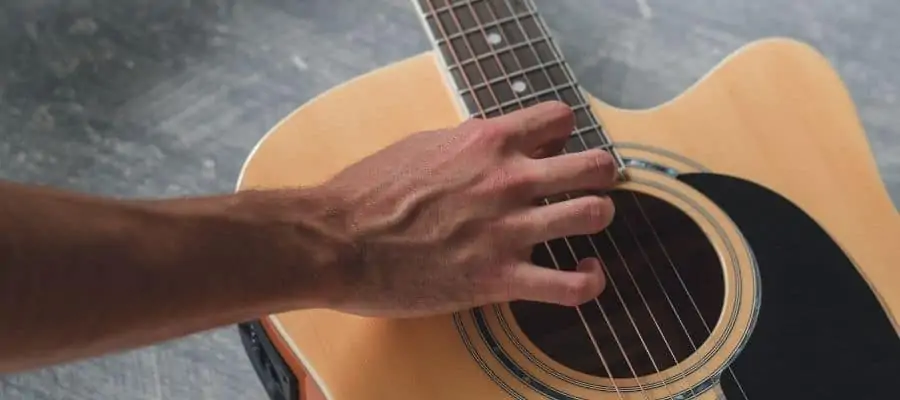
Knowing when to change your guitar strings is crucial for every guitarist. Many signs mean it is time to change your guitar strings. One of the most noticeable ones is the sound of guitar strings and their look of them.
If they sound dull and they had lost clarity of them, that is one of the signs that you need a pair of new ones. Visually, you could see that strings are discolored or even black.
The state of the strings is not the only sign that your strings have reached the end of their life. The looks of the fretboard and your hand can also give you information about the state of the strings.
When the guitar strings are old, you could see the dust and dirt buildup underneath the strings in the corner of the frets. This is due to the vibration of the string which causes the dust and dirt to fall off the string into the crevices of the fretboard. In case you have an electric guitar, this is also visible around pickups. This is a dead giveaway that it is time to change your strings.
The state of your hands after each session can give you an insight into the state of your strings too. If your hands, especially fingers look dirty and brownish and you need to wash them after playing guitar, it is time to change your strings and clean your guitar.
Is It Easy to Restring A Guitar By Yourself?
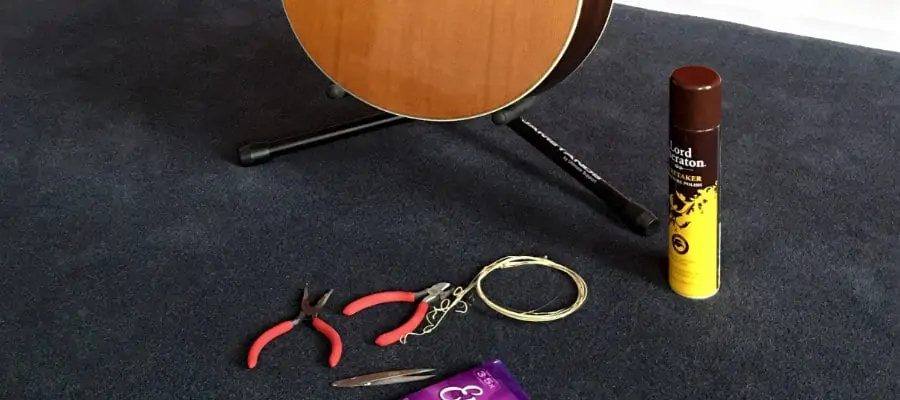
Changing your guitar string is a relatively simple task to do and most people do not have any problems with doing it. Sure you would need to go through a trial and error process to get good at it, but in the end, everyone can do it.
As a guitarist, knowing how to change guitar strings is essential. Considering they tend to break in a most inappropriate time such as during the performance, knowing how to change broken string quickly is essential. The skill of restringing your guitar will save you a lot of money and time.
Can a Beginner Change Guitar Strings?
While at the first look changing guitar strings for the people who have just entered the world of a guitar can be intimidating, this process is easy and quick. There are dozens of step-by-step tutorials that go through changing your strings in detail.
Sure, it will take you much longer the first time you do it since you do not have the practical knowledge, but learning this skill will make you more independent when it comes to taking care of your guitar. If you come across a problem, going to the nearest guitar shop is never a bad idea.
How To Restring A Guitar?

There are two ways you can change your guitar strings: one by one or all at once. Which way should you go? Replacing one string at a time will keep the guitar in tension which can be good for your guitar neck and it will take less time for your tension to adjust.
On the other end, you can remove all old strings and put new ones. This can make cleaning your guitar much easier. It will give you better access to clean the fretboard and areas that are not reachable because of strings.
The first thing you need to do when it comes to restringing is to detune and remove old strings. It is usually recommended to keep the old set of strings as a spare in case one of the new strings breaks. After you have removed old strings, use proper guitar cleaning products to clean the fretboard.
For the guitars that have Floyd rose or tremolo bridge, they require a more delicate approach since you would have to be more careful with this part. It is important to keep the same tension of the bridge at all times.
You can do this in two ways. One is to change the strings one by one. This way, the bridge will be a constant tension because of the strings. The other way is to put something under the bridge to keep it in place while you change your strings. Having your bridge just collapse into the body will make it much harder to change your strings and in some cases, it can even mess up the setup of your guitar.
The next step is to put the new strings on. Make sure that you are putting the right strings in the right place. Usually, they come individually packed and in some cases, they are color-coded. One of the most important things to note is to not overtighten the string. This can lead to string breaking. A good thing to keep in mind is to not tune it too much above the standard tuning.
A good thing to do is after you have put the string through the tuning post, leave about 1-2 inches of string which you will need to bend 90 degrees, and then tune up the string. This will keep the string locked in place while you tighten it and it will help with keeping it in tune.
After you have put all of the new strings on, use wire cutters to cut the loose ends of strings. If you do not have wire cutters there is a trick to bend the string left to right multiple times to break it off. But this is difficult to do with thinner strings.
Why Do The New Strings Keep Getting Out of Tune?

After you have successfully changed your guitar strings you will notice that strings keep getting out of tune. This is something that happens to almost every guitar. The reason for this is the fact that new strings stretch causing them to go out of tune easily.
There is a trick to fixing this for which most beginners are unaware. The trick is to stretch each string individually by yourself. You can do this by placing your index and middle finger below the string and your thumb onto the string holding it against the fretboard. After you have done that, the next step is to pull upwards with your index and middle finger.
To get the best results you need to repeat this on multiple positions of the neck for each string. You will need to repeat this entire process multiple times and tune the string back to pitch each time.
The reason for the strings not keeping the tune can also be because you did not put the strings on properly. Taking it slowly and being careful while changing the strings will save you a lot of time in the long run and the strings will settle in much faster.
How Long Should Guitar Strings Last?

While the guitars get better with age, guitar strings don’t. The life of the strings mainly depends on the quality of them and how much you care about them. When should you change your string is determined by how much do you play. The type of strings also has a huge effect on their life of them. Coated strings such as Elixir can last double the time regular strings last.
The average player changes strings approximately every 90 days. Some players wait six months or even more. Only a few of the players change their strings before every performance.
In the end, you should change your strings when they lose clarity and the quality of sound they used to have. Investing in more expensive strings can be better in the long run since they last longer but they wear the same risk of breaking as inexpensive ones.
How To Extend Your Guitar Strings Life?
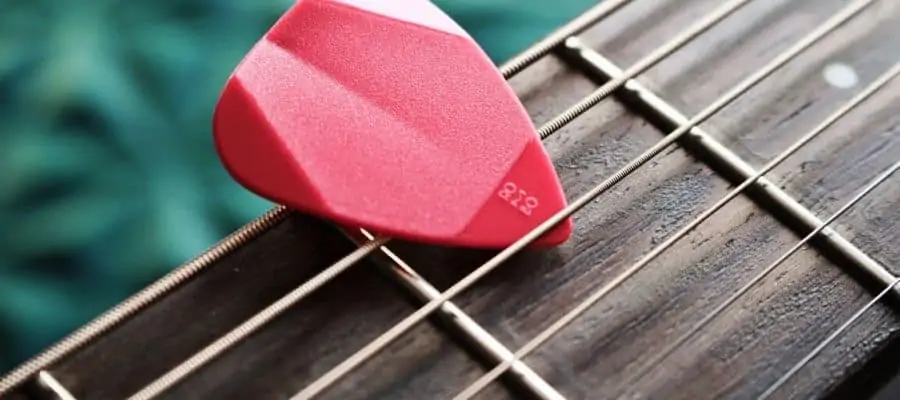
Extending the life of your guitar strings is one of the most confusing topics when it comes to guitar maintenance. The first good thing to do is to keep your guitar stored in a dry place, clean your hands before playing, buy high-quality strings and use proper guitar products to clean your guitar strings.
Storing your guitar in a humid place will significantly increase the rate at which your guitar string rust. This is due to oxygen, moisture, and electrons on strings combining. The problem with moisture is that it will stick on the coating of your string and that is the main reason your guitar strings rust.
The quality of your strings is also an important part of the lasting of the strings. Buying cheap strings can be very enticing, especially if you like to change them frequently. However, in the long run, there’s a big downside to having poor-quality strings.
Most of the guitar strings winding today are done in nickel-steel This material is more susceptible to rust than other alloys such as pure nickel or zinc plated steel.
Washing your hands can also help with improving the life of your guitar strings. Apart from sweat and moisture, we put on strings by our hands, dead skin cells, dirt, and grime are a big part of the reason your guitar strings rust.
In the end, the most important thing for the life of your guitar strings is to properly clean them after each session. Properly cleaning the strings means using a microfiber cloth to pinch each string individually and slide it from the bridge of the guitar to the headstock.
Can You Reuse Old Guitar Strings? Should you?
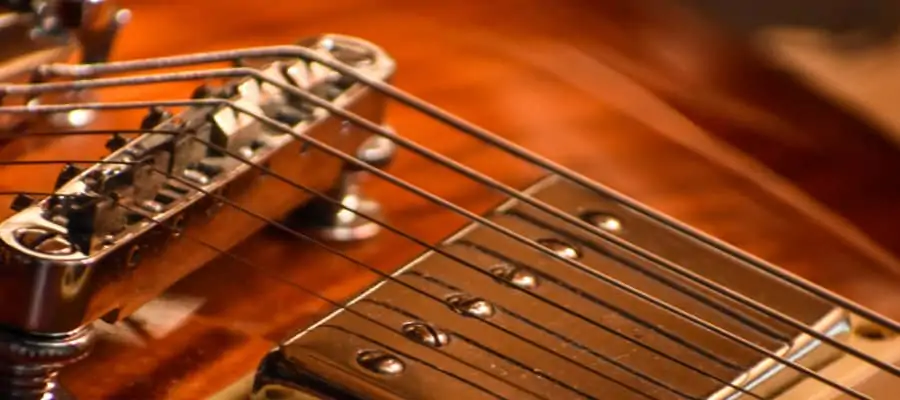
Old guitar strings can be used but keep in mind that they will not sound nearly as good as new ones. Not only the strings will not sound as good, but they also carry a bigger risk of breaking.
There is an option of boiling the old strings to remove the dust, grime, and dirt from them. Bassists do this all the time, which is understandable considering that the price of the bass guitar strings is much higher than guitar strings and strings themselves are much thicker.
But, when it comes to guitar strings, it is not worthwhile to boil your rusty strings. It will even come close to the original sound they had when you just bought them. You are much better off buying a new set of strings.
Still, you should not throw away old strings. They can be used as a spare if you manage to break one of the new strings. Even though guitar shops nowadays sell each string individually, keeping used strings in your guitar case or bag is always a good practice.
Conclusion
Guitar restringing topic for which you can find a lot of information online. There is not a fixed price when it comes to guitar restringing. Everything depends on the type of strings and the type of your guitar. The best thing to do is to change the guitar strings by yourself.
You could get much better quality strings for the same price as going to the nearest guitar shop to have your guitar restrung. Sure it can be intimidating for new players to change their guitar strings by themselves, but it is worthwhile to go through the process of learning. It will save you a lot of money in the long run.
If you found this article useful you may want to save this pin below to your Guitar board

Recent Posts
Some guitarists insist on buying an expensive amplifier with their electric guitar. They assume that this is a must for every type of guitarist out there. However, in some situations, this isn’t...
Top 50 Free Realistic Guitar VST Plugins With Sound Examples
As technology has rapidly advanced in the recent decade, computers are stealing more and more roles from physical musical instruments and accessories. Nowadays, you do not need expensive amps,...

